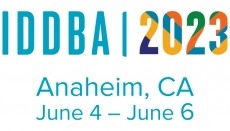Tetra Pak underlines cost saving potential of consulting service
The processing and packaging firm first introduced the programme back in 2008 to help customers running dairy, juice, and nector factories to drive effeciecies and cut costs. By setting up the consulting service, Tetra Pak also wanted to extend its own role from that of a supplier to a trusted partner.
Since its inception, the three step cost OCR system has been used by more than 60 Tetra Pak customers for 80 separate projects.
Potential savings
And according to Tetra Pak, the results of these efforts have been encouraging with operational costs of running a packaging line coming down by an average of 12 per cent.
Because the costs associated with the operation of a packaging line (i.e. labour, maintenance and utilities) typically account for 5 to 15 per cent of total system costs, the savings from a focused cost reduction programme can be significant.
The Saudi Arabian dairy firm SADAFCO entered into its first OCR project with Tetra Pak when the programme was launched in 2008. Steve Satherley, the chief operations officer at SADAFCO, said the company is happy with the improvements the programme has delivered.
“Thanks to the OCR programme, we are now able to operate with lower levels of finished product inventory and to provide greater potential output with the same machines when required.”
Operational analysis
The OCR prgramme from Tetra Pak is based on the industry standards from World Class Manufacturing and its tools and techniques. These have been adapted for application to dairy, juice, and nector factories that run Tetra Pak processing and packaging lines.
The three step programme starts with cost mapping and loss analysis to give a full picture of the operational cost structure. It then moves into an “opportunity analysis” phase that identifies where the quickest and biggest savings can be achieved. These can be found in a range of areas from material use to cleaning and set up time.
Once the best saving opportunities have been identified the programme moves to the implementation phase that involves project execution, staff training, and progress tracking.








